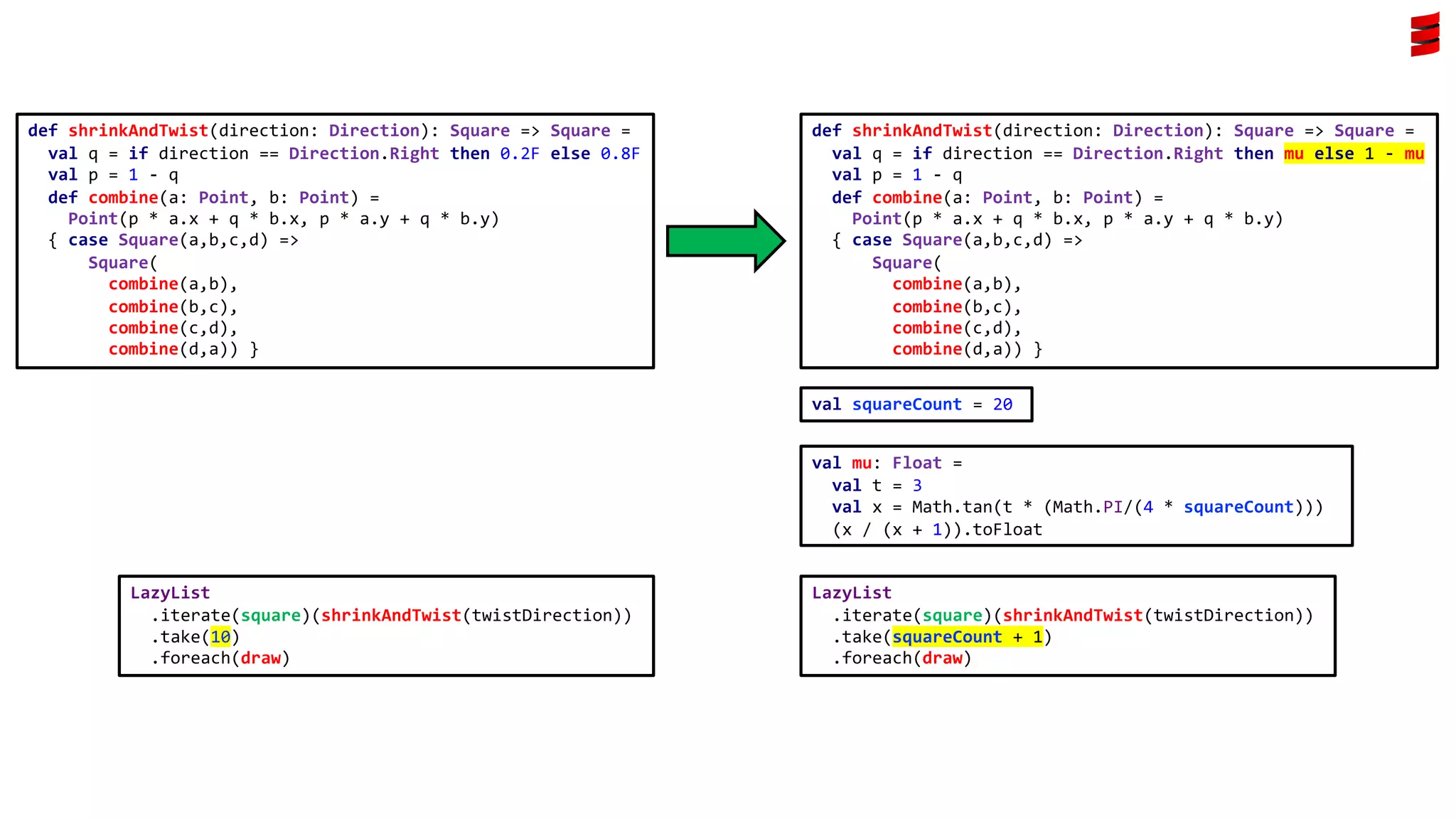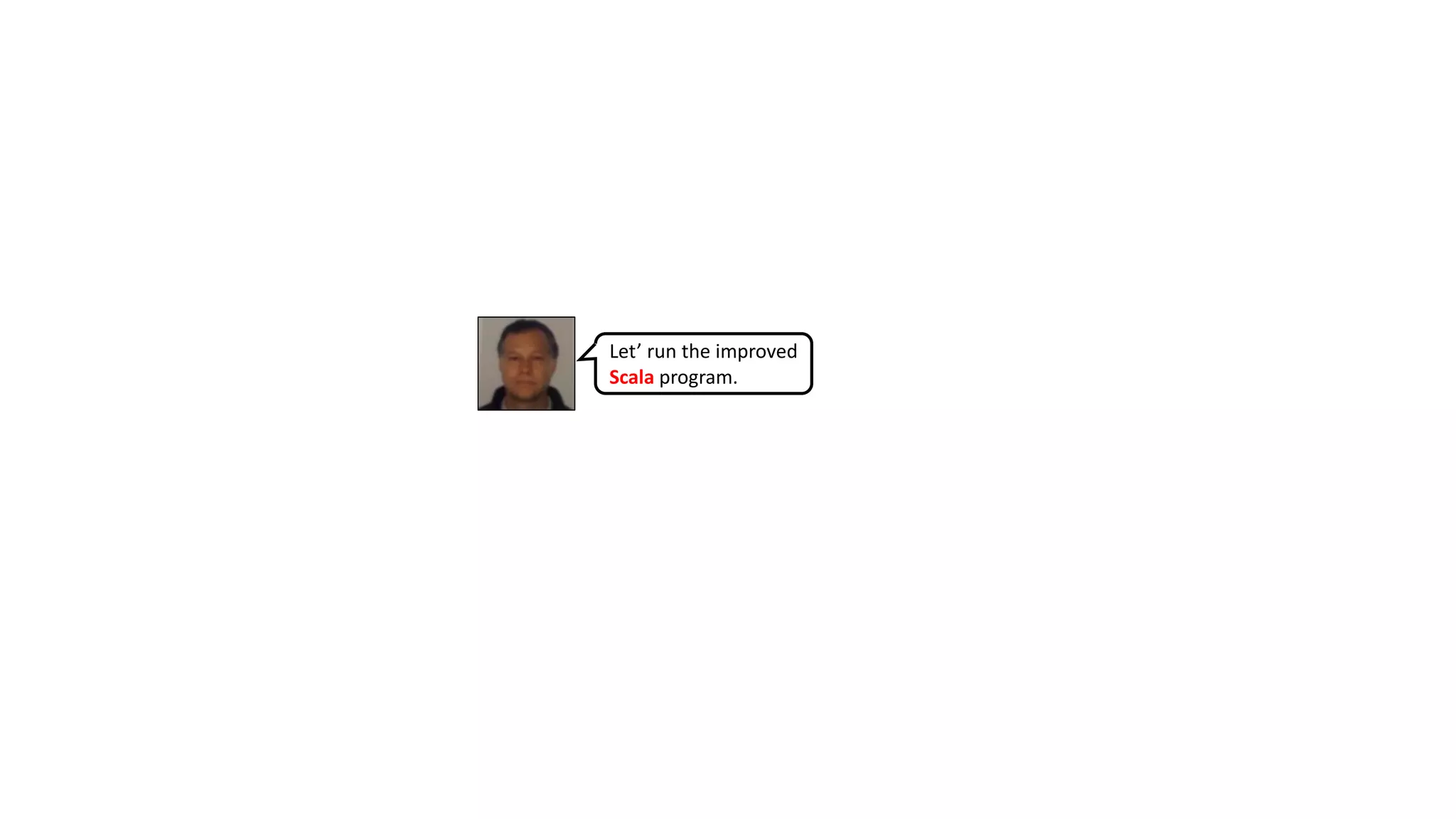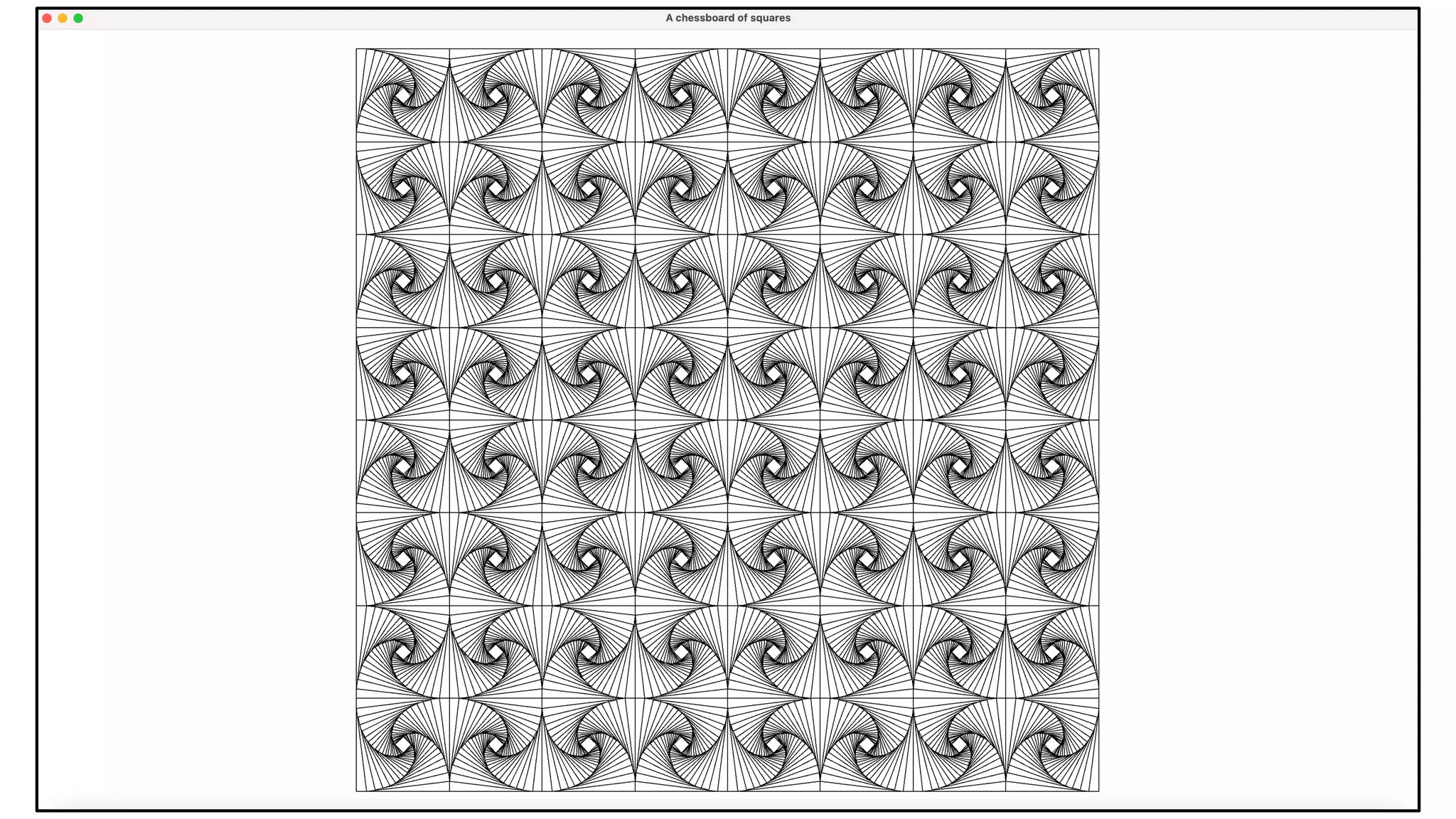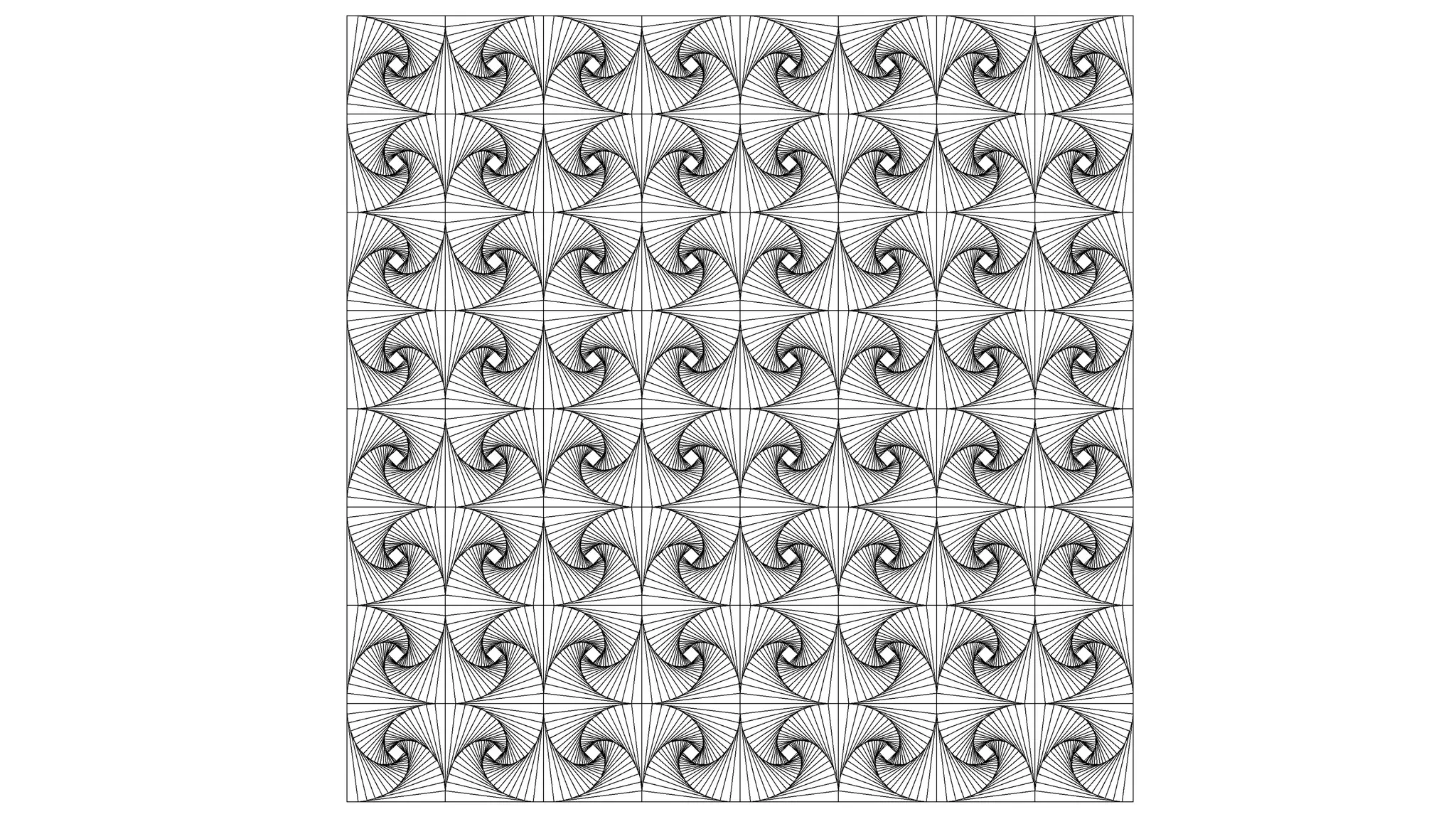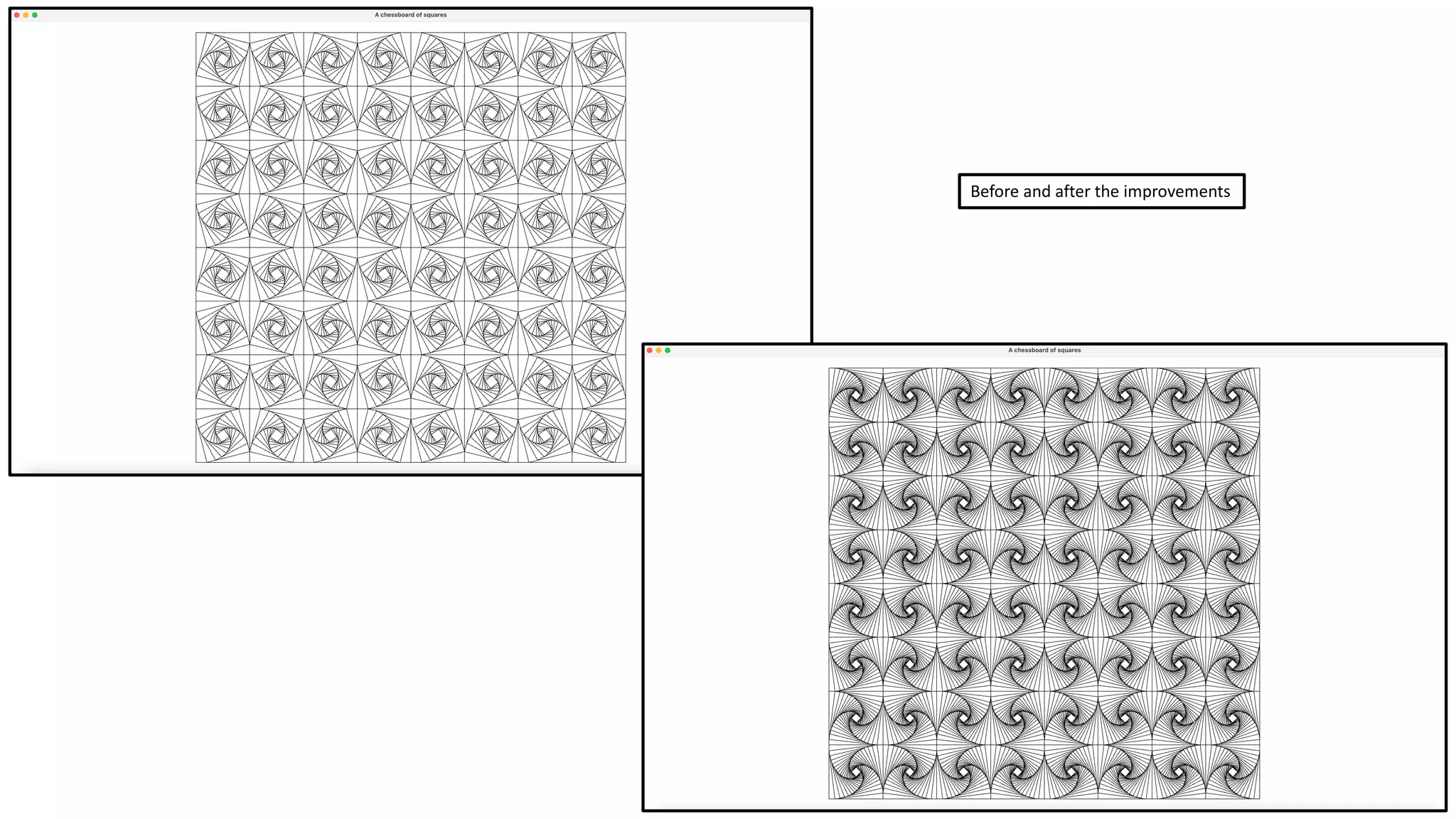The document discusses the translation of a Scala program into Java for drawing geometric shapes, specifically focusing on triangles and squares. It details how to create a chessboard-like grid of concentric squares, including the concepts of direction and twisting, to enhance the drawing's complexity. The text outlines various programming techniques and visual outputs, including an exercise to modify the original drawing requirements.
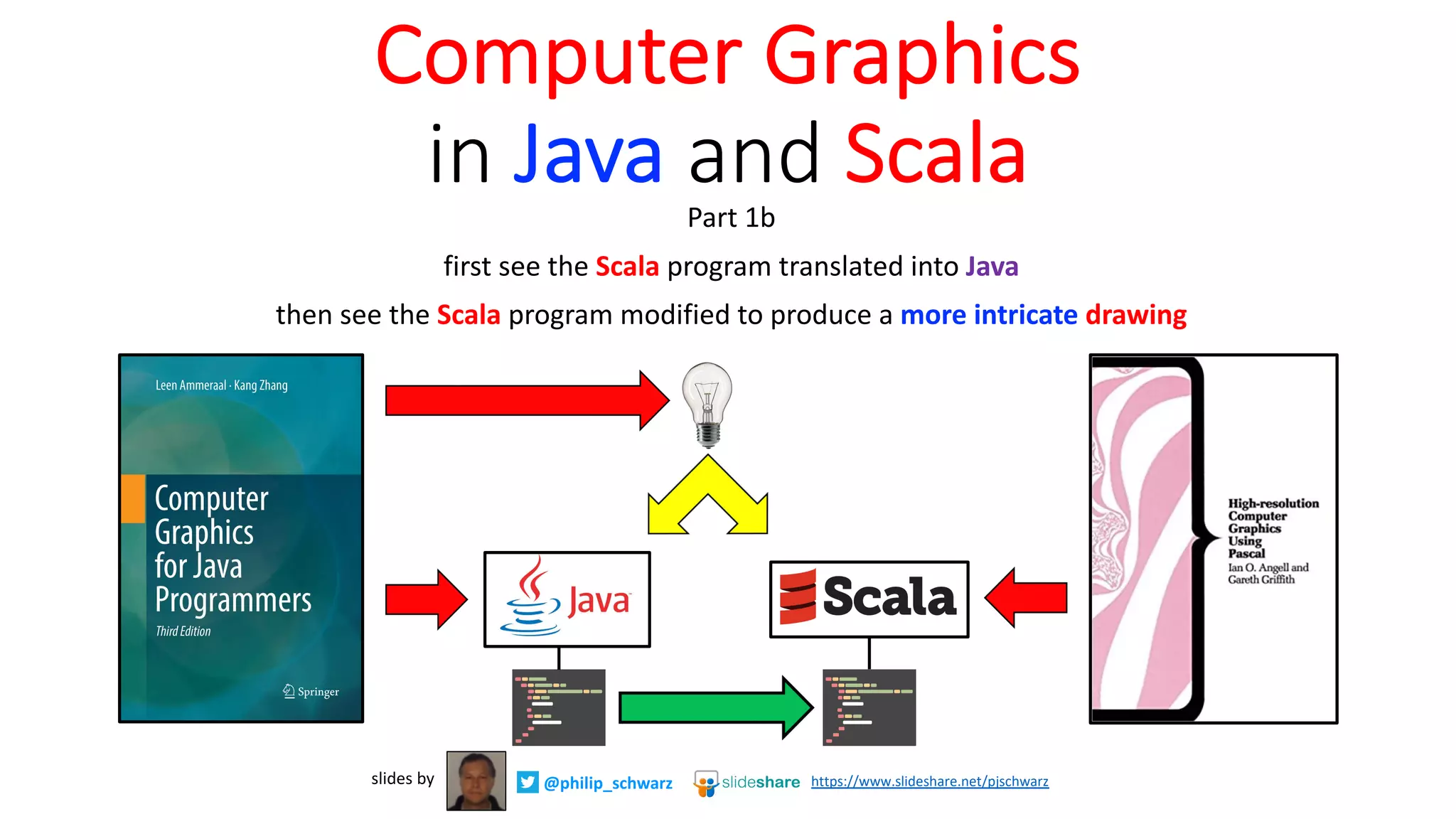
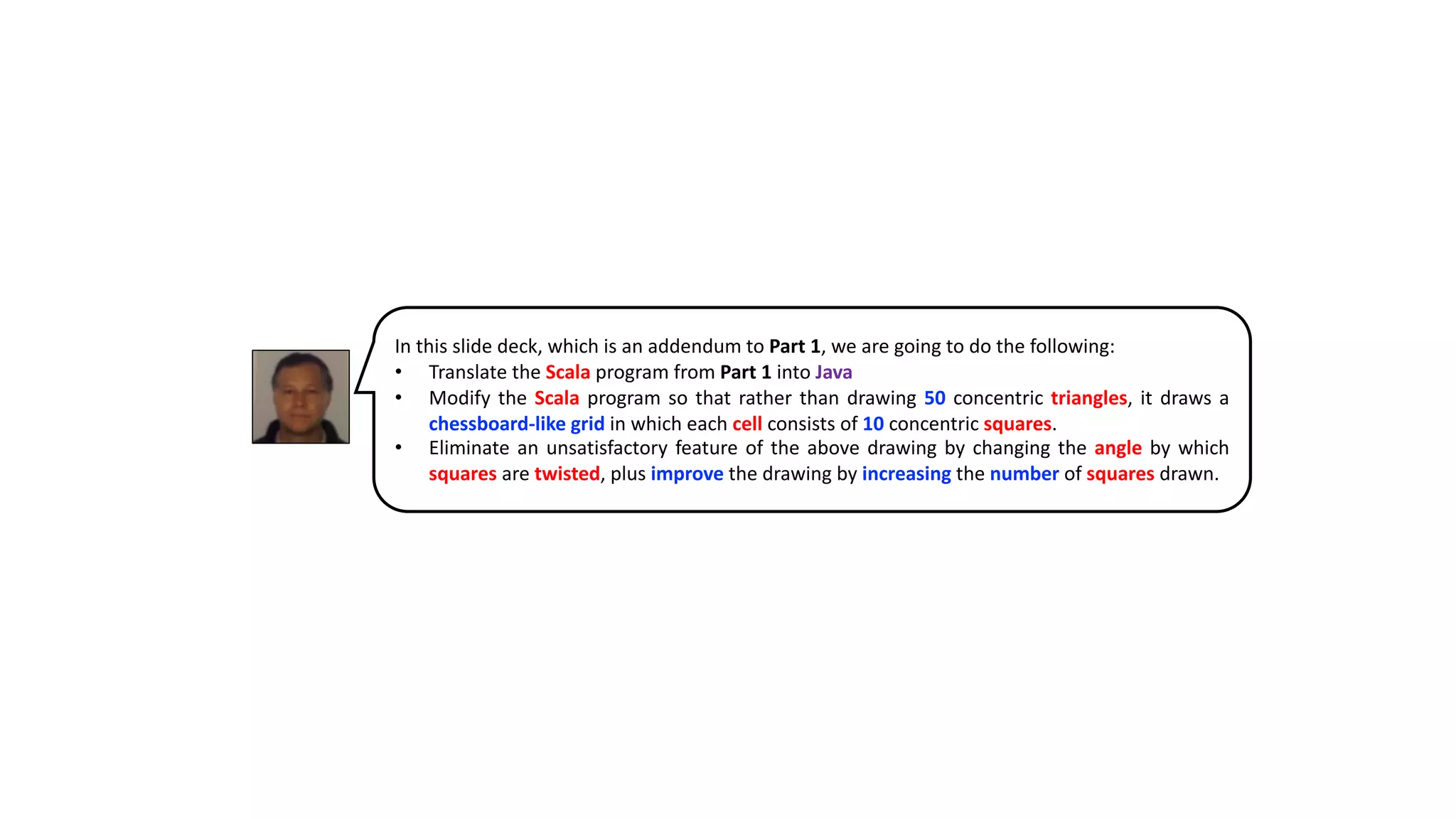
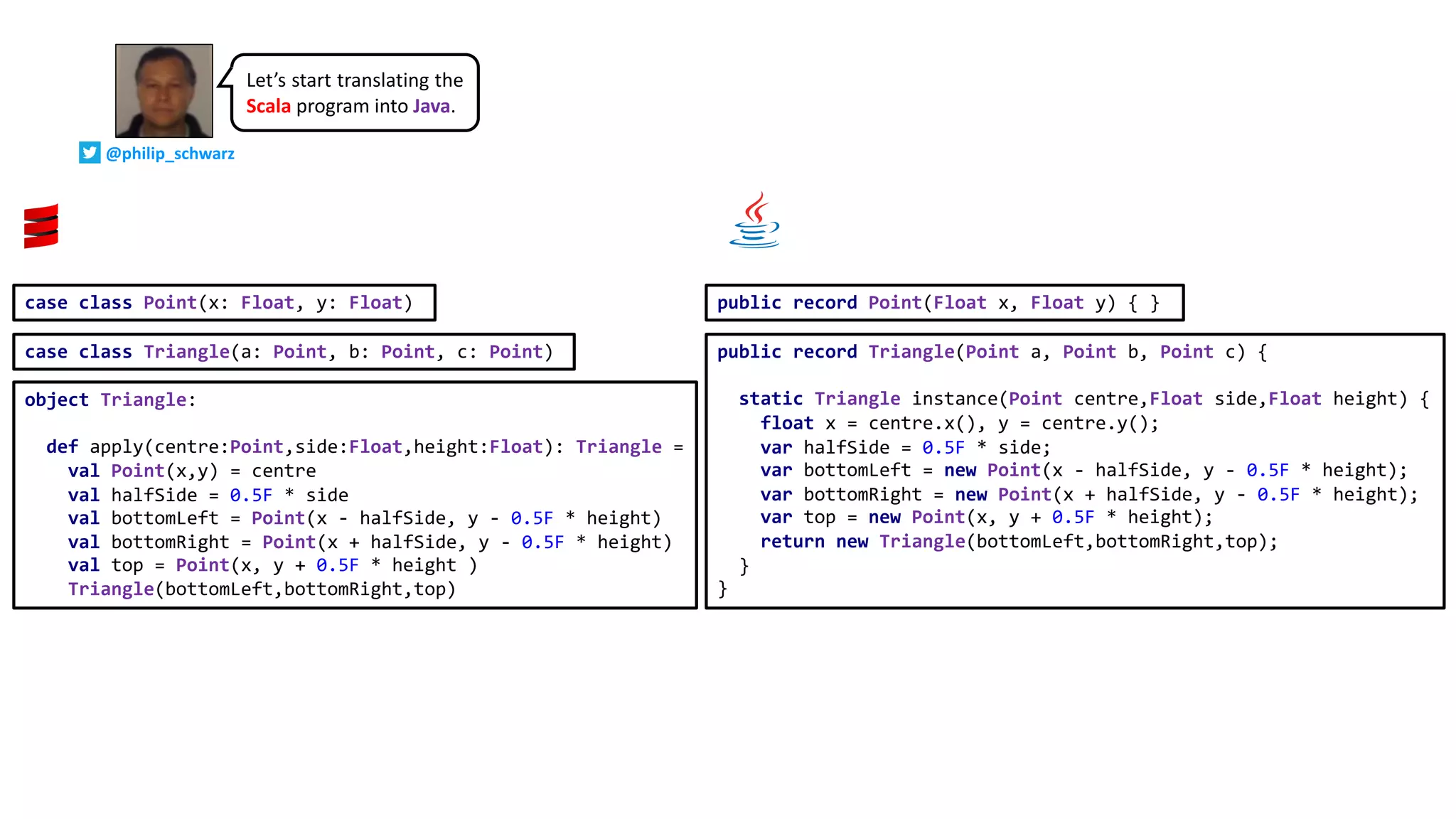
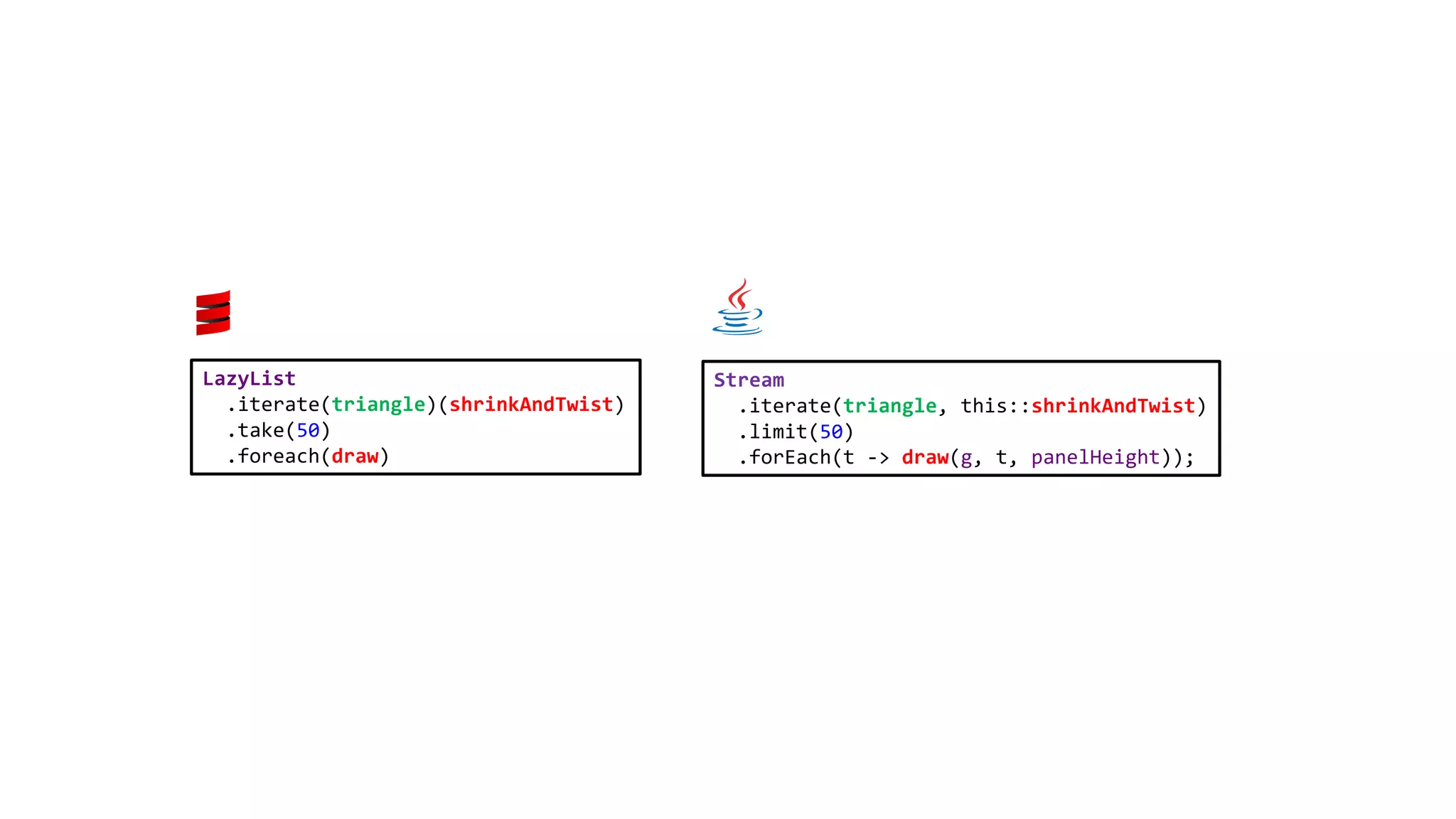
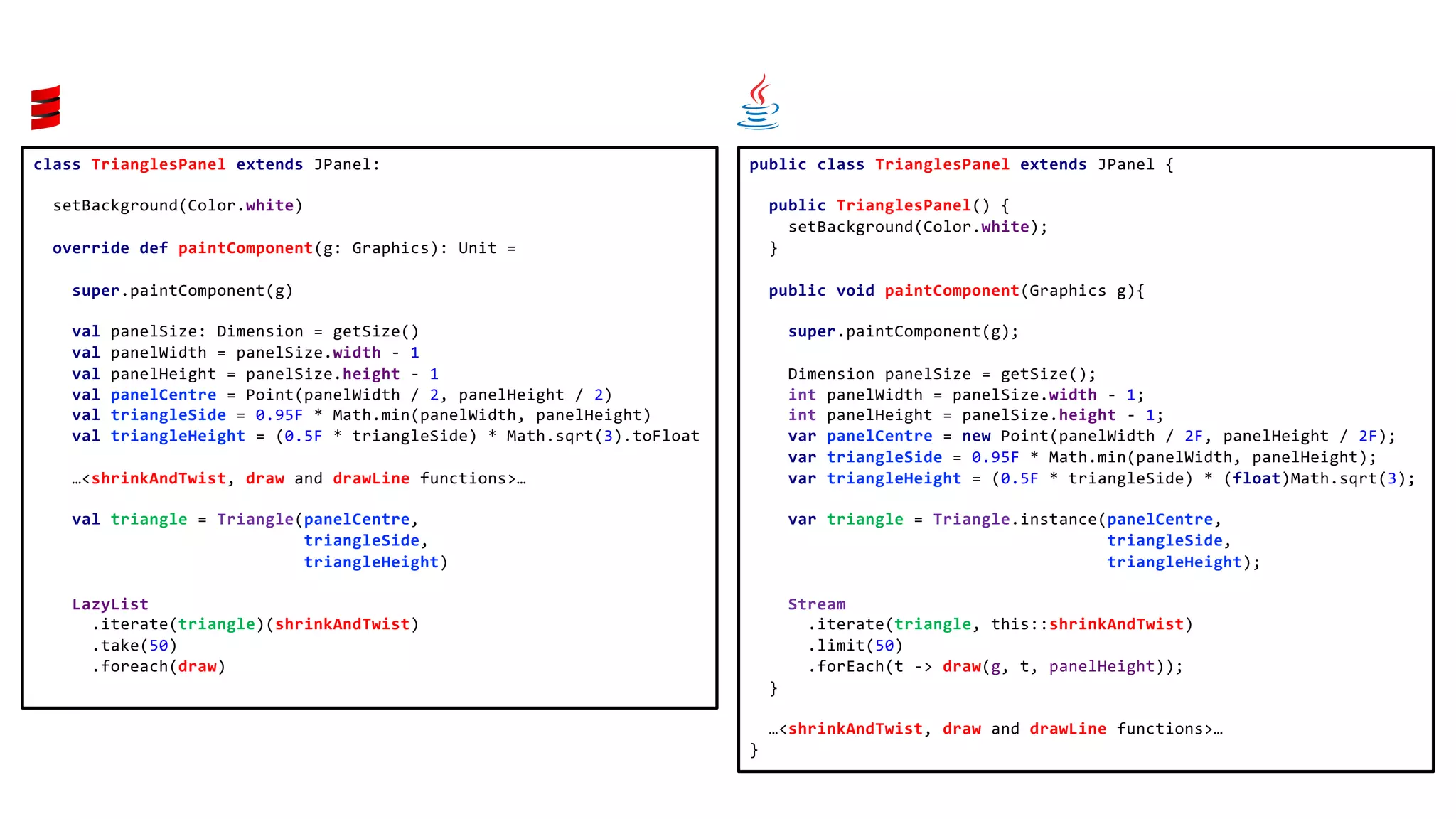
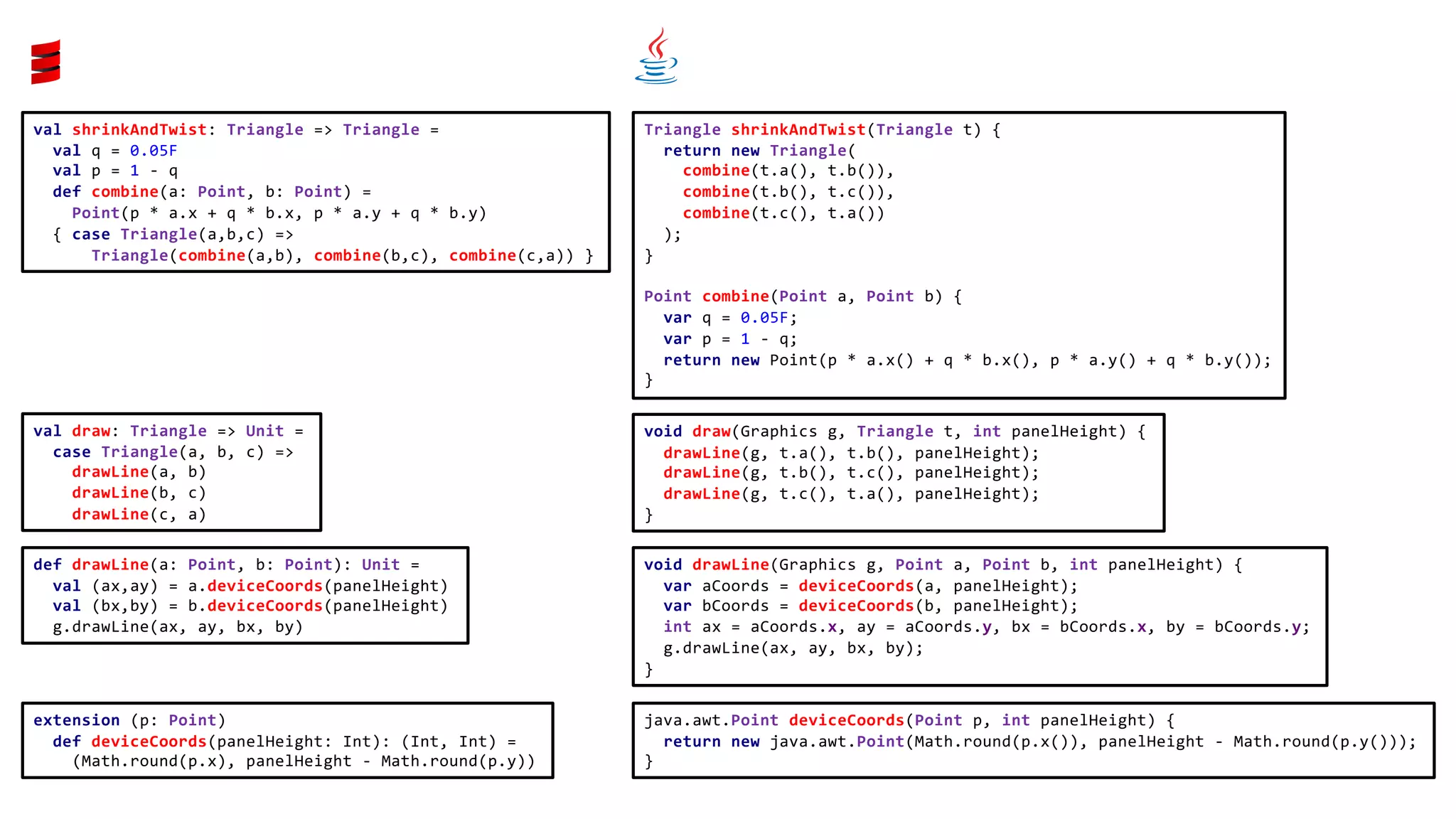
![class Triangles:
JFrame.setDefaultLookAndFeelDecorated(true)
val frame =
new JFrame("Triangles: 50 triangles inside each other")
frame.setDefaultCloseOperation(WindowConstants.EXIT_ON_CLOSE)
frame.setSize(600, 400)
frame.add(TrianglesPanel())
frame.setVisible(true)
@main def main: Unit =
// Create a frame/panel on the event dispatching thread
SwingUtilities.invokeLater(
new Runnable():
def run: Unit = Triangles()
)
public class Triangles {
public static void main(String[] args) {
// Create a frame/panel on the event dispatching thread
SwingUtilities.invokeLater(
() -> new Triangles().drawTriangles()
);
}
void drawTriangles() {
JFrame.setDefaultLookAndFeelDecorated(true);
var frame = new JFrame("Triangles: 50 triangles inside each other");
frame.setDefaultCloseOperation(WindowConstants.EXIT_ON_CLOSE);
frame.setSize(600, 400);
frame.add(new TrianglesPanel());
frame.setVisible(true);
}
}](https://image.slidesharecdn.com/computer-graphics-in-java-and-scala-part-1b-220403195510/75/Computer-Graphics-in-Java-and-Scala-Part-1b-7-2048.jpg)
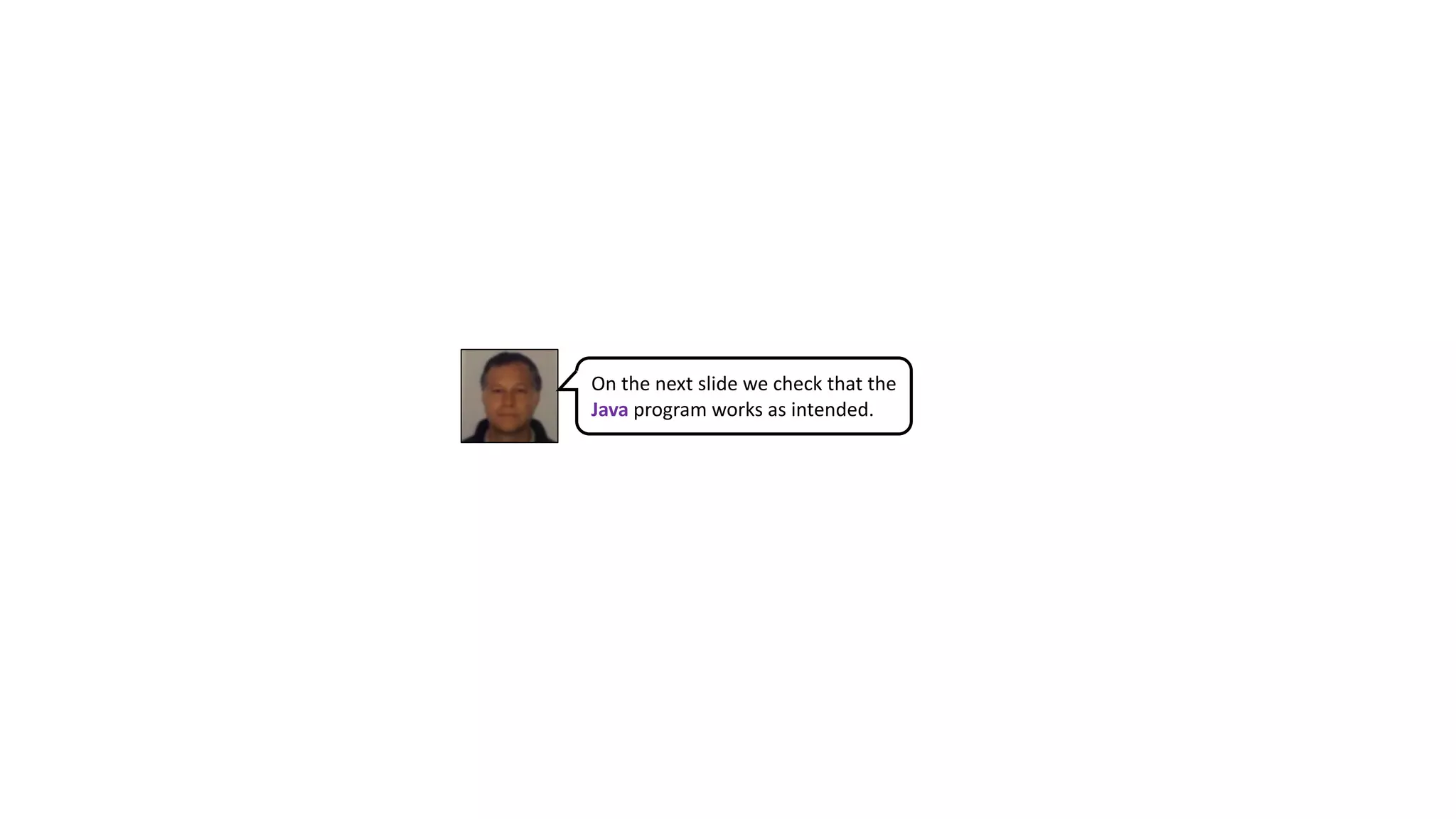
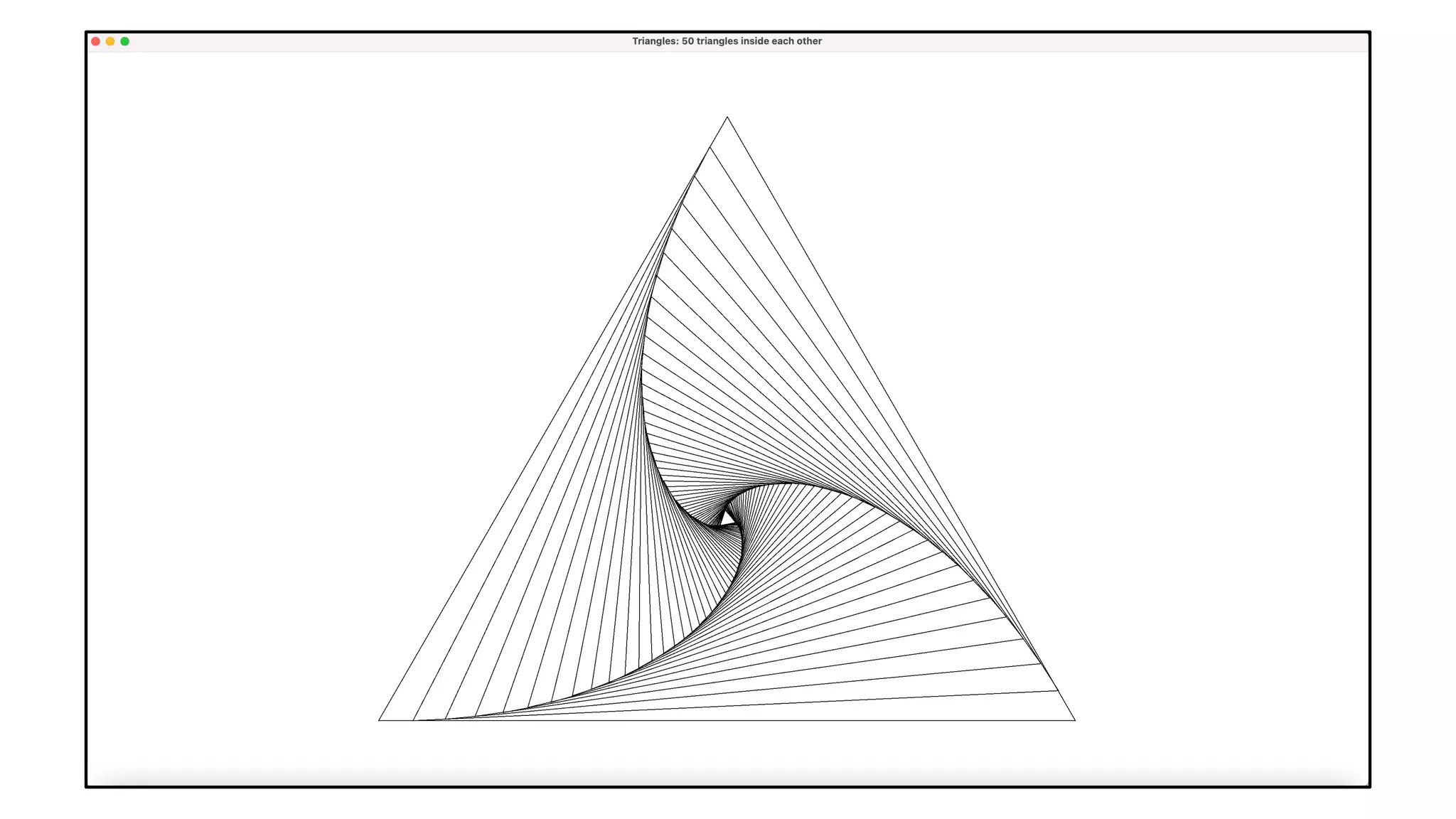
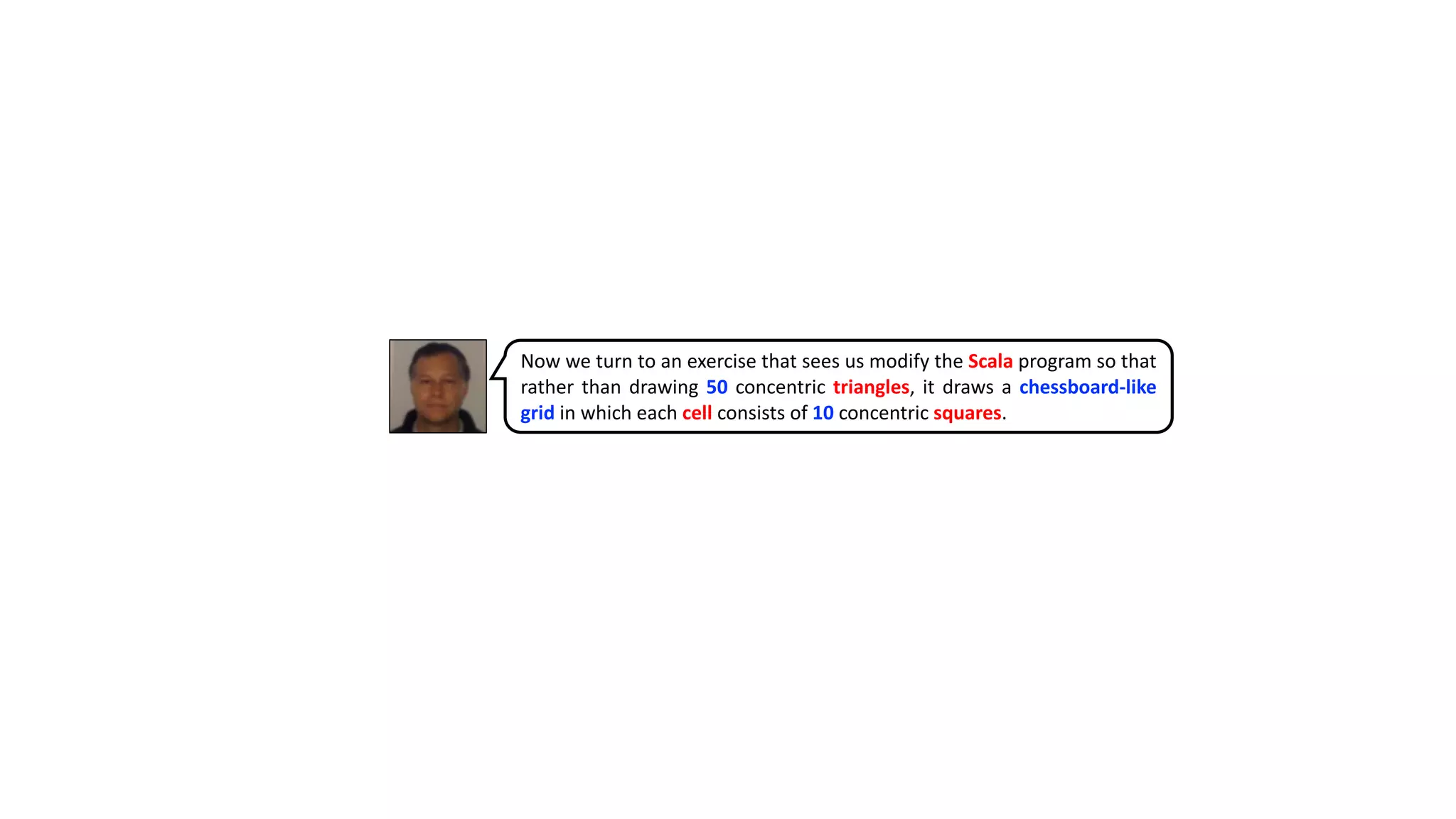
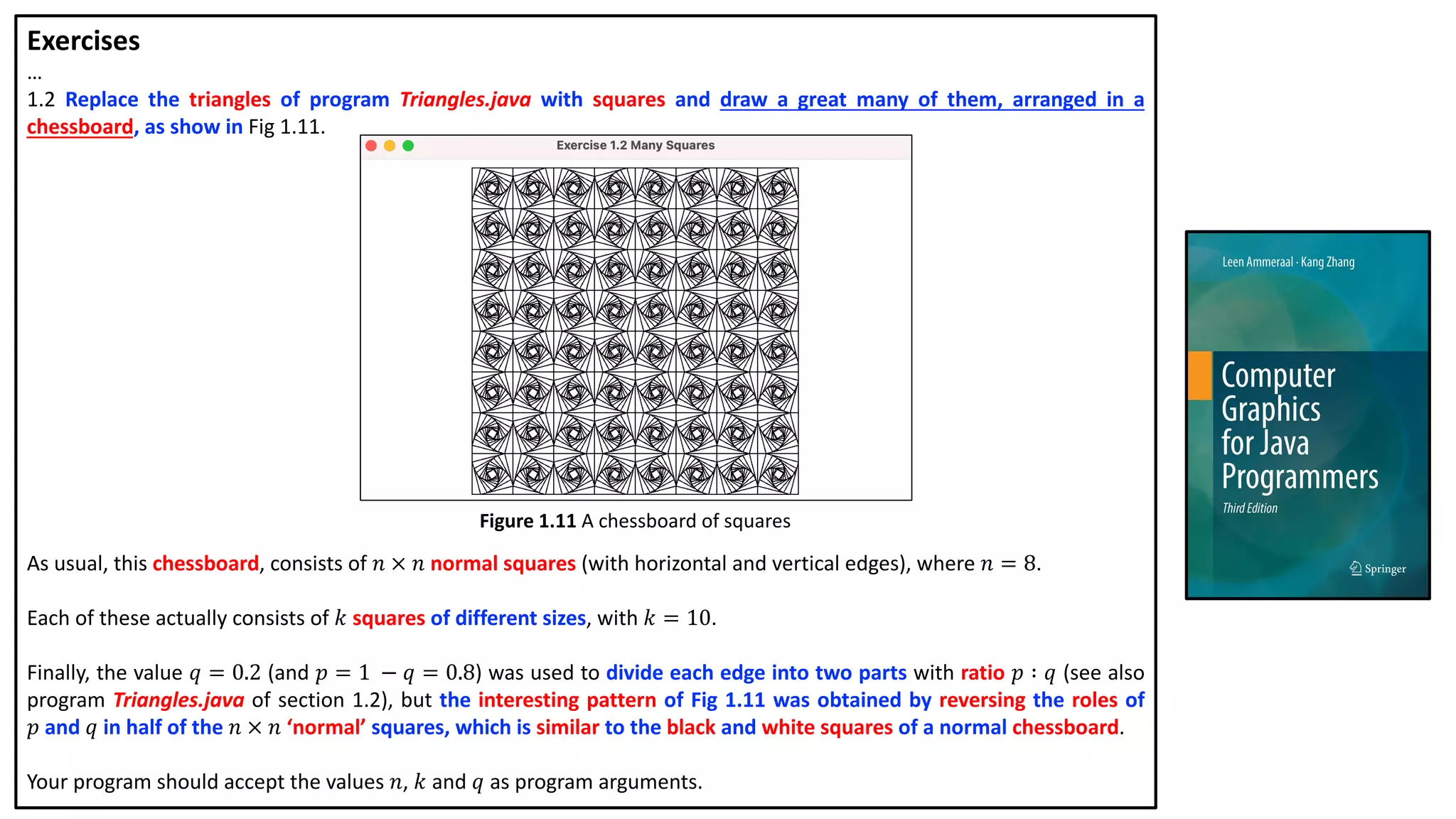

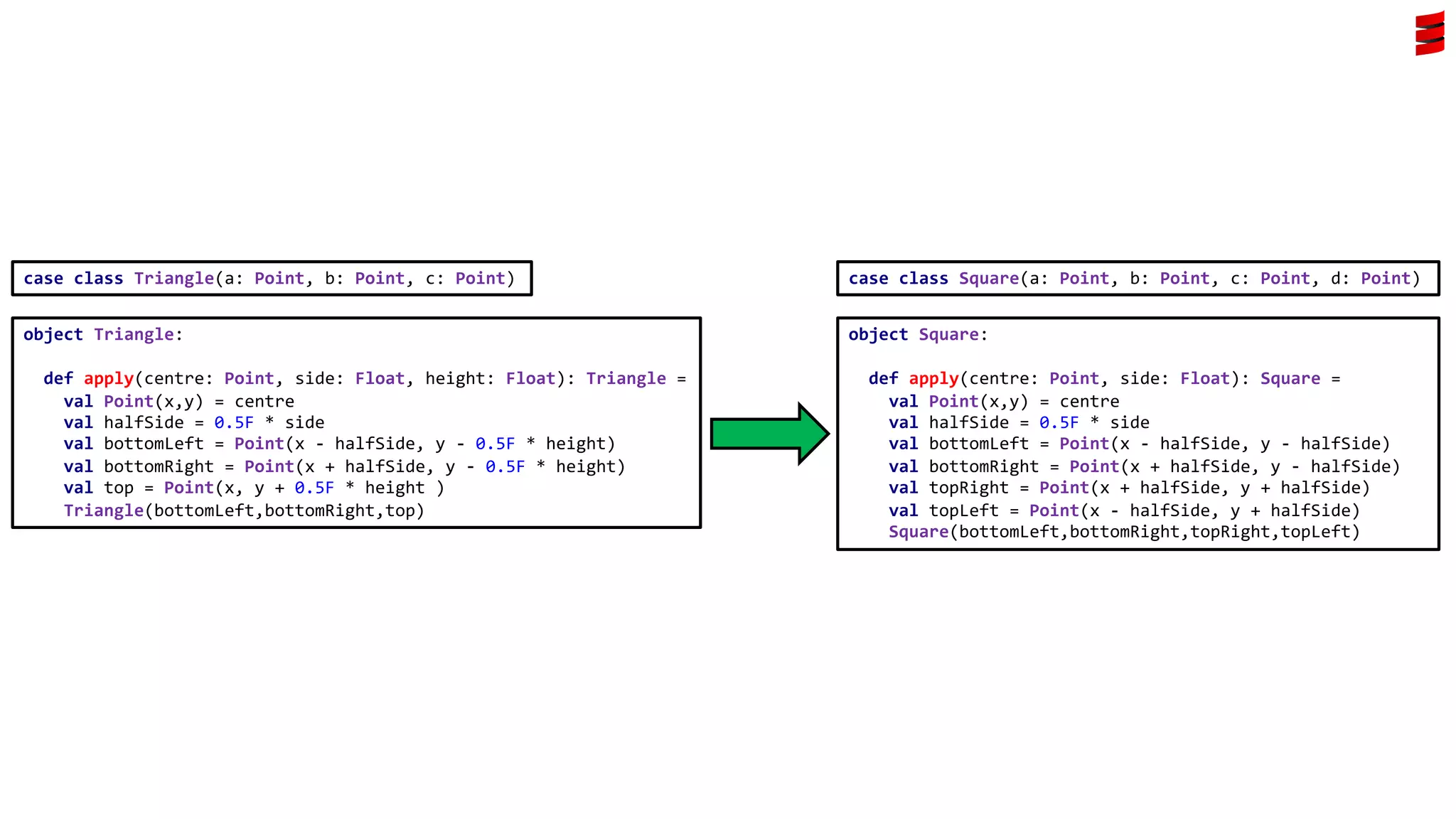
![LazyList
.iterate(triangle)(shrinkAndTwist)
.take(50)
.foreach(draw)
for
(row, startDirection) <- (0 until gridSize)
zip alternatingDirections(Direction.Right)
(col, twistDirection) <- (0 until gridSize)
zip alternatingDirections(startDirection)
square = Square(squareCentre(row,col),squareSide)
yield LazyList
.iterate(square)(shrinkAndTwist(twistDirection))
.take(10)
.foreach(draw)
def squareCentre(row: Int, col: Int): Point =
Point(panelCentre.x-(gridSize/2*squareSide)+(col*squareSide)+squareSide/2,
panelCentre.y-(gridSize/2*squareSide)+(row*squareSide)+squareSide/2)
enum Direction:
case Left, Right
def reversed: Direction = if this == Right then Left else Right
def alternatingDirections(startDirection: Direction): LazyList[Direction] =
LazyList.iterate(startDirection)(_.reversed)
We are going to use a for comprehension to work through each of the 64 cells in the 8 × 8 grid,
ensuring that each time we move from one cell to the next, we invert the direction (right = clockwise
and left = counterclockwise) in which we twist the concentric squares drawn within a cell.](https://image.slidesharecdn.com/computer-graphics-in-java-and-scala-part-1b-220403195510/75/Computer-Graphics-in-Java-and-Scala-Part-1b-14-2048.jpg)
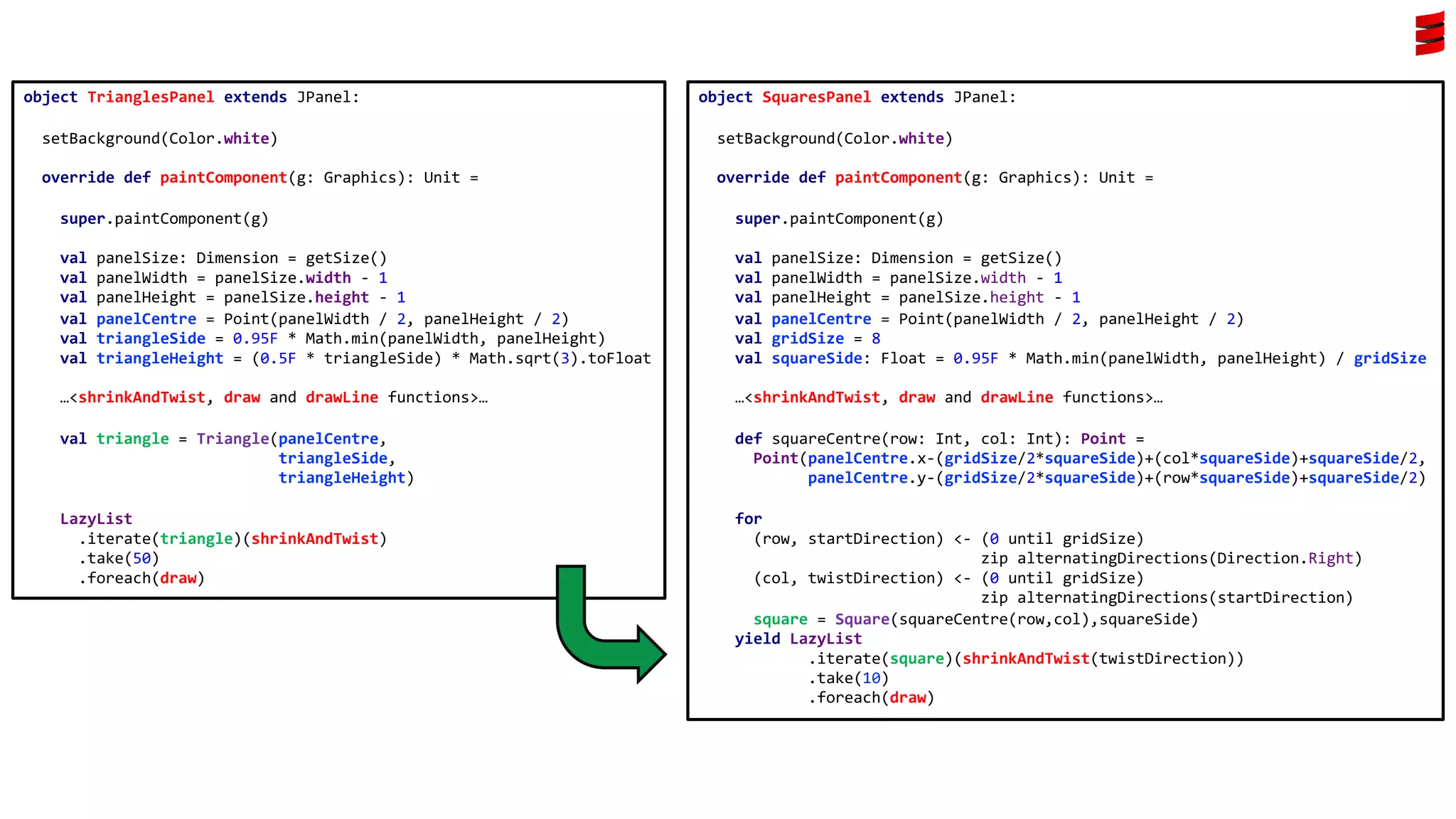
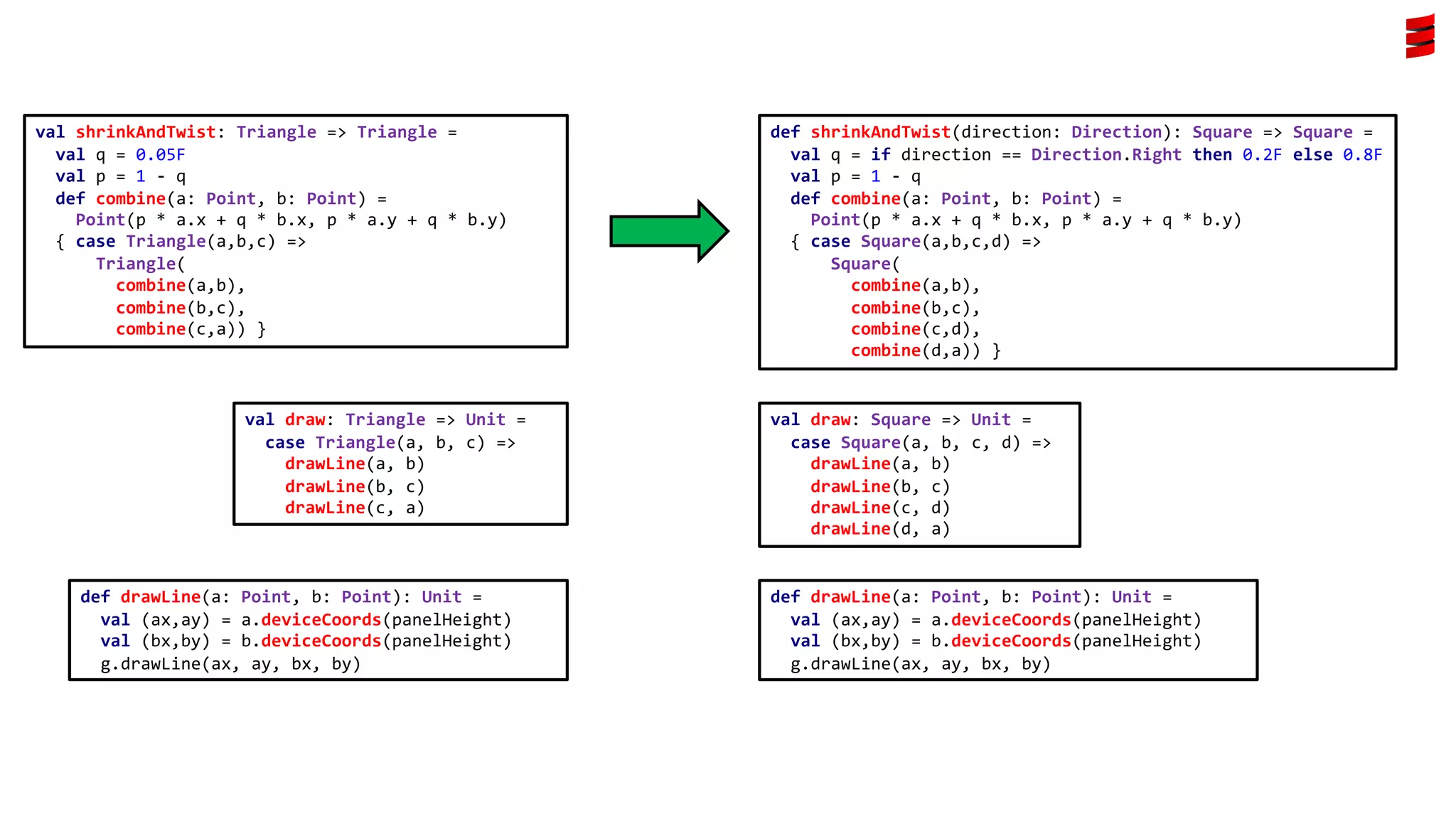
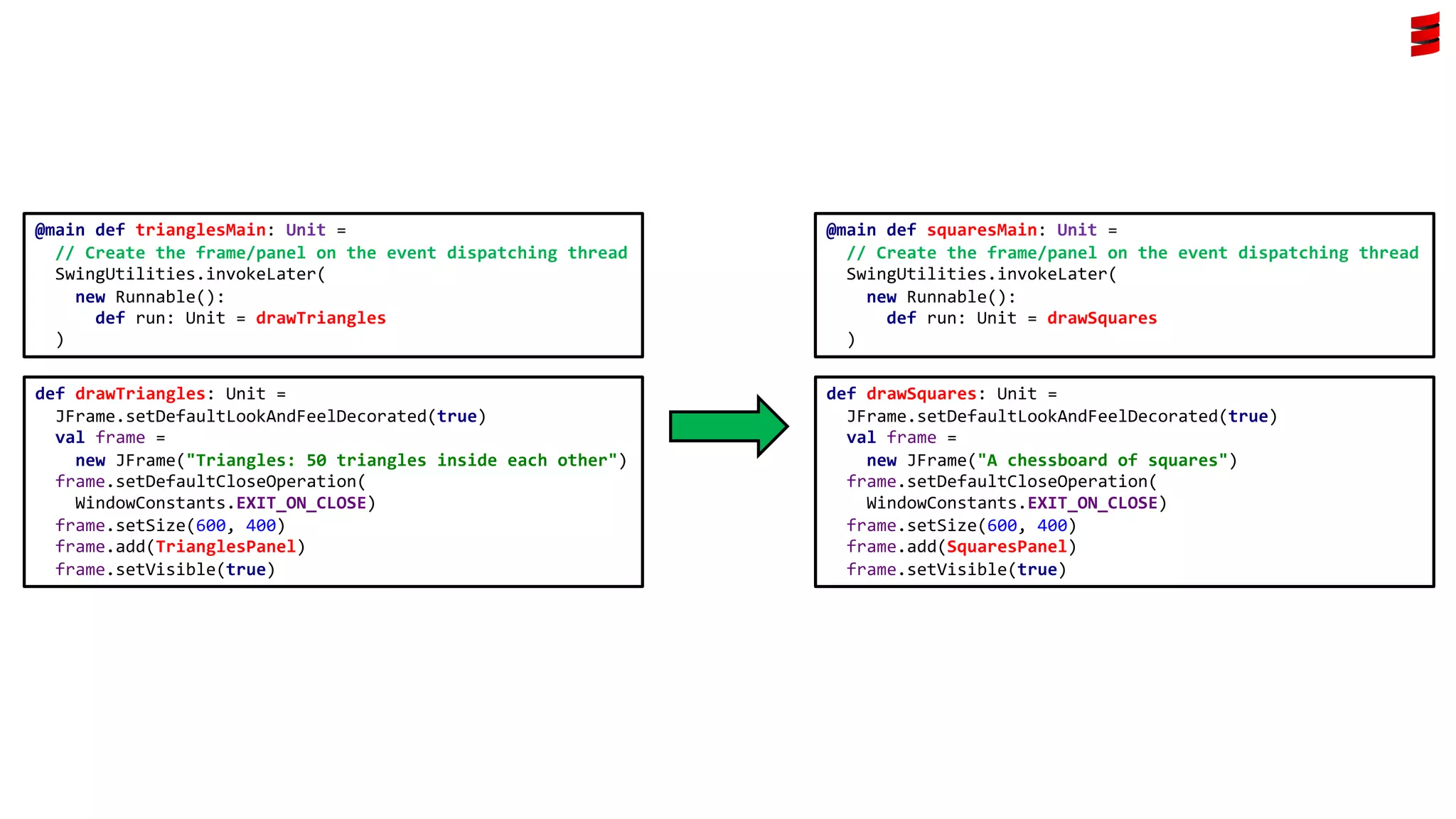

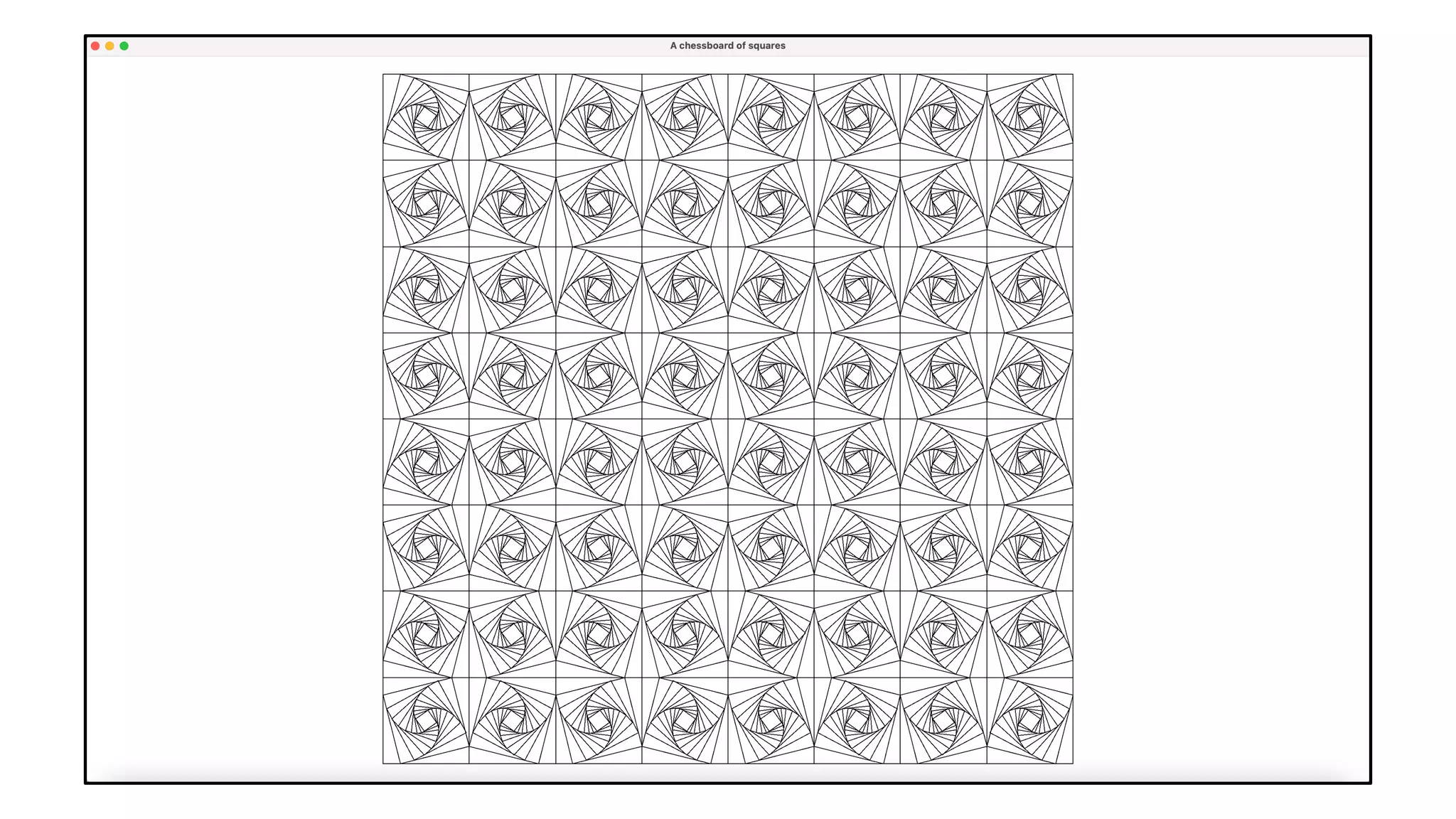
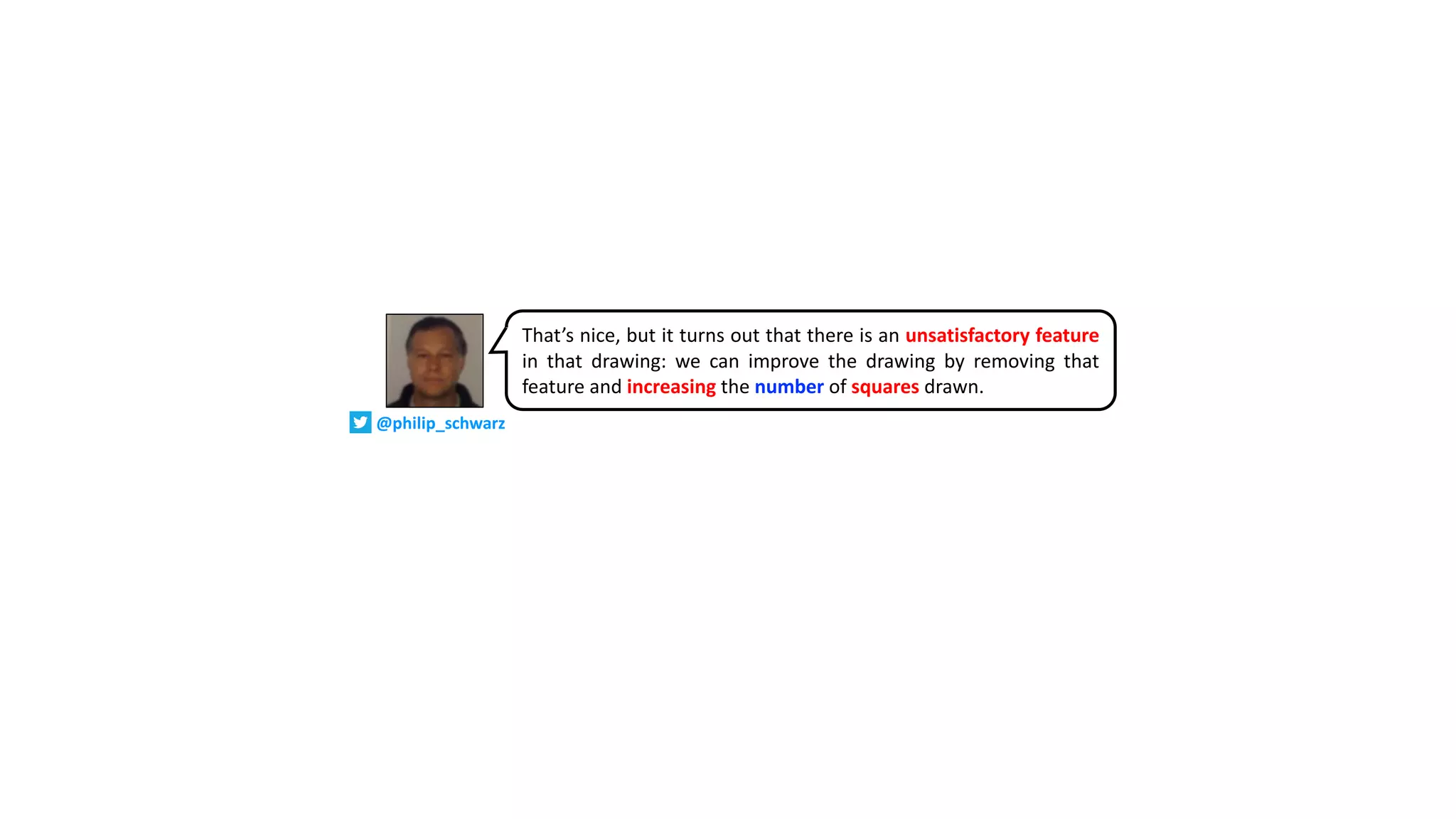
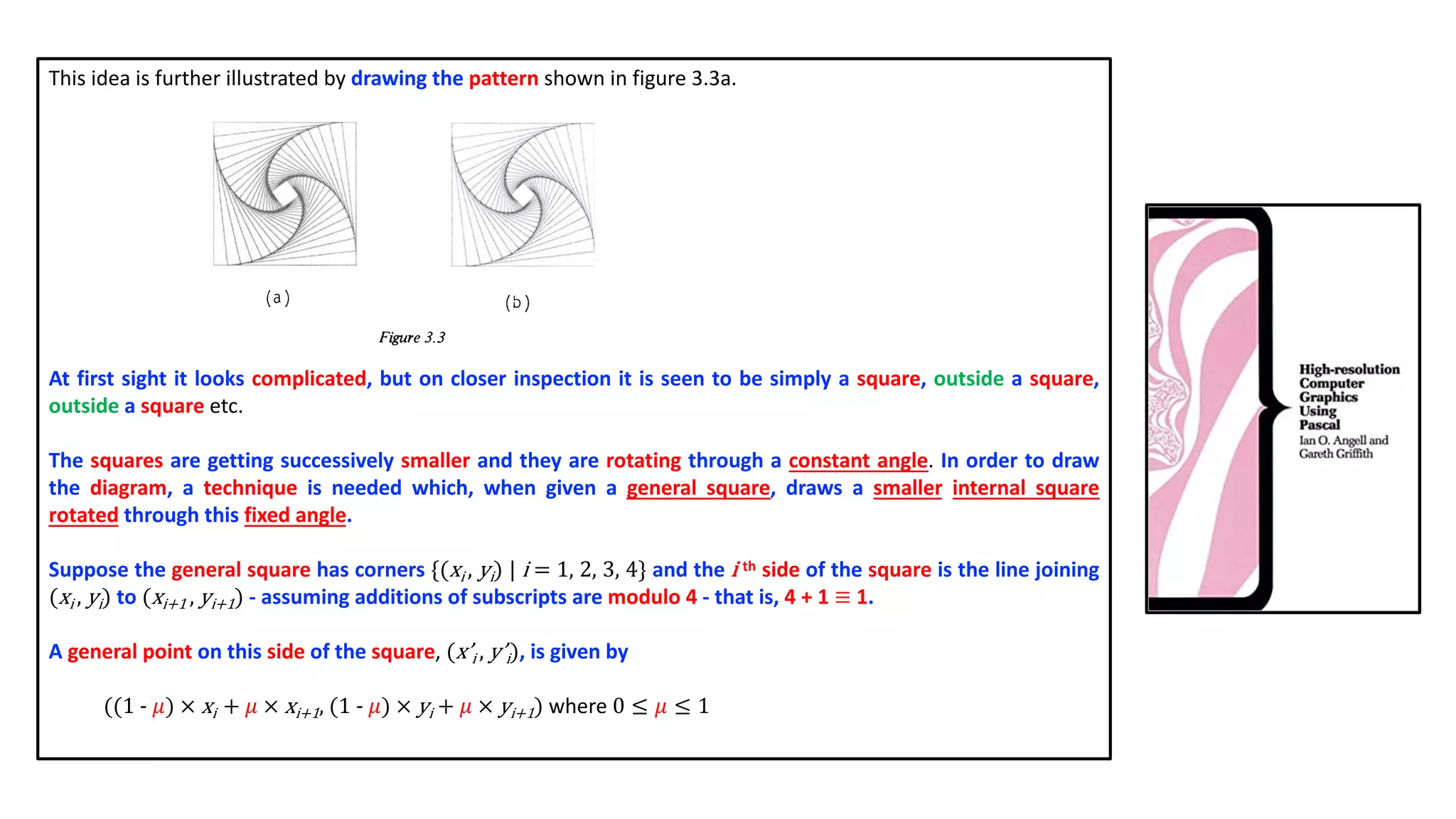
![In fact 𝜇 : 1 - 𝜇 is the ratio in which the side is cut by this point. If 𝜇 is fixed and the four points {(xi , yi) | i = 1, 2,
3, 4} are calculated in the above manner, then the sides of the new square make an angle
𝛼 = tan-1[𝜇/(1 -𝜇)]
with the corresponding side of the outer square. So by keeping 𝜇 fixed for each new square, the angle between
consecutive squares remains constant at 𝛼. In figure 3.3a … there are 21 squares and 𝜇 = 0.1.
There is an unsatisfactory feature of the pattern in figure 3.3a: the inside of the pattern is 'untidy', the sides of
the innermost square being neither parallel to nor at 𝜋/4 radians to the corresponding side of the outermost
square.
This is corrected simply by changing the value of 𝜇 so as to produce the required relationship between the
innermost and outermost squares.
As was previously noted, with the calculation of each new inner square, the corresponding sides are rotated
through an angle of tan−1[𝜇/(1 −𝜇)] radians.
After 𝑛 + 1 squares are drawn, the inner square is rotated by 𝑛 × tan−1[𝜇/(1 −𝜇)] radians relative to the outer
square. For a satisfactory diagram this angle must be an integer multiple of 𝜋/4.
That is, 𝑛 × tan−1[𝜇/(1 −𝜇)] = t(𝜋/4) for some integer t, and hence
𝜇 =
tan[t(𝜋/4n)]
tan[t(𝜋/4n)]+1
To produce figure 3.3b, 𝑛 = 20 and t = 3 are chosen.](https://image.slidesharecdn.com/computer-graphics-in-java-and-scala-part-1b-220403195510/75/Computer-Graphics-in-Java-and-Scala-Part-1b-22-2048.jpg)
